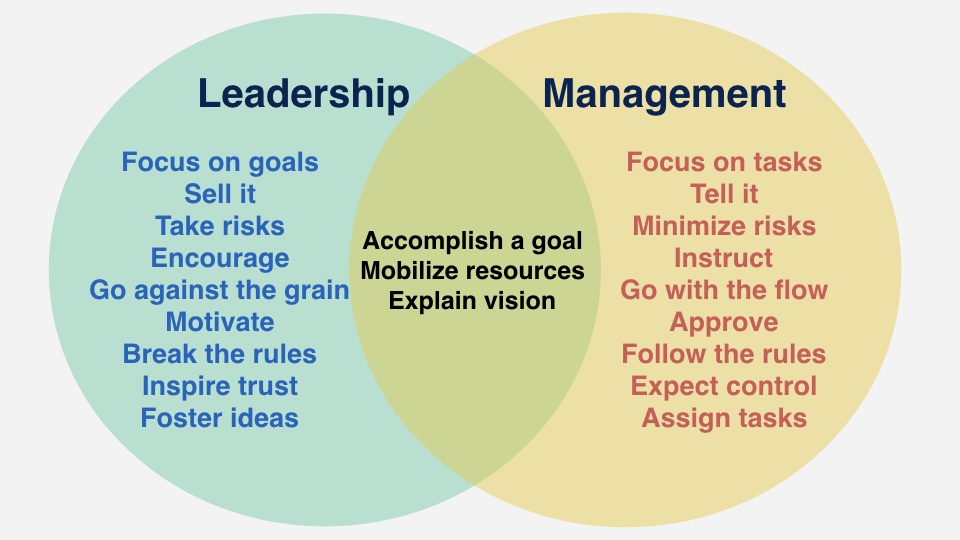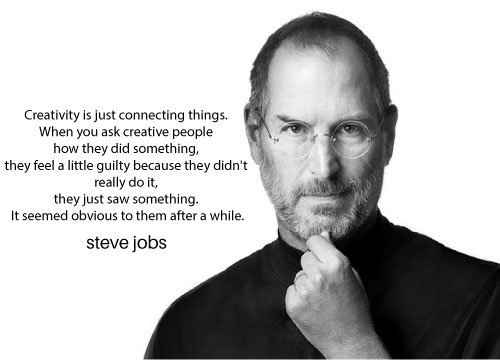I’ve been thinking a lot about leadership lately. In particular, what does it mean to be a leader vs. a manager? Can you aspire to be a leader, or does it just happen? Do I (and you, dear reader) understand the distinction between these terms? I think the best way for me to explore these thoughts is as a set of informal essays. This first edition comes from my observations about different styles of both leadership and management that I’ve experienced over the last 15 years of my career in software development. It’s a mix of my opinions and reflections on source material I’ll cite at the end.
Before we dive deeper in leadership styles, it’s important to understand what technical leadership is not? It’s an old adage that if no one is following, you’re not leading. I’ll extend that and say, in knowledge work, if no one is willingly following, you’re not leading. You might have an executive title, with direct reports who do what you ask. But if they’re following your orders (for example, delivering your projects that they don’t really believe will add value) in the hopes of getting a raise or out of fear of getting fired, you’re not leading in my book…you’re just commanding.
Again, I’m talking about knowledge work here, specifically software development. This isn’t a battlefield, where failure to follow a direct order by a commanding officer is treason. The fact is that good developers, designers, data scientists, SRE’s, and technical managers are in demand. If you mistreat them, they’ll quit. So, in this field, you need to be an inspirational leader.
OK, so you’re out to inspire. Are you? If no one else understands your goals, then leading an army of one is not leadership! I’ll argue that leadership starts with personal relationships, starting with the leader’s first follower. There’s a fine line between the “lone nut with a vision”, the first follower (“now there are two nuts?”), and the pivotal second follower that creates “a crowd”. Derek Sivers pointed this out elegantly in his now-famous 3-minute TED talk:
The first follower transforms a lone nut into a leader. If the leader is the flint, the first follower is the spark that makes the fire. The second follower is a turning point: it’s proof the first has done well. Now it’s not a lone nut, and it’s not two nuts. Three is a crowd and a crowd is news.
A true leader has followers who are inspired by that leader and therefore want to follow him or her. In turn, the leaders I respect support those who follow them. Leaders ensure that their followers are better off in some way as a result of achieving the goal.
In “Made to Stick”, Chip and Dan Heath popularized the story of Tappers and Listeners: “When a CEO discusses “unlocking shareholder value,” there is a tune playing in her head that the employees can’t hear.
It’s as though she’s tapping a table with “The Star-Spangled Banner” in her head and asking you to guess the tune, and even worse, expecting that you will, and being surprised (maybe disappointed) when you don’t.
Leaders have mastered getting their ideas through instead of just being a tapper and hoping for the best. If you’re in a CXO role, you should be a leader, not a manager. You have managers that report to you, and your strategic intent for them needs to be crystal clear. They need to understand it, and organize their teams to achieve it.
Not every manager is a leader but in some organizations, leaders are also managers. A CXO who isn’t leading is under-performing. A manager who is an inspiring leader for their team may be on their way to becoming an executive.
- Leadership, like trust, is earned. Management, on the other hand, can be assigned.
- Leadership is about taking risk, placing speculative bets, understanding that not all of them will pay off, knowing when to cut losses or amplify wins. Management is about executing the bet that someone has decided to take, or caring for the winnings of previous bets that paid off.
- Leadership is about accountability - "the buck stops here". Management is about responsibility: Successfully executing a plan.
- Leadership involves setting visions and long-term goals...defining a strategy. A leader influences followers and provides support and guidance in order to empower and inspire them to achieve those goals.
- You're leading when followers want to keep in touch with you. They come to you for advice and guidance, not to just give status reports.
- Leaders are concerned with the "what" and the "why" (and the "why" is often just as much about "who"). Managers need to understand the "what" and "why", but are primarily focused on the "how".
- Related to the above point, leadership involves connecting value consumers to value producers, building a system by ensuring there is a flow of value. Managers are responsible for executing and optimizing (where possible), their area of the value stream.

Styles of Leadership
Leading from the Front

In this style of leadership, leaders are steps ahead of their followers to make sure the task is doable before they ask others do them. You can detect this style in organizations when you see the leaders who are fully engaged. They frequently want to approve before any one takes a different approach to problem solving.
This style of leadership is inspired by the military and can be effective when there is not much room for error or time is of the essence. Orders are given, everyone agrees and follows the leader. Even though leading from front is well-suited in a time of crisis or in situations involving deep expertise, it's very limiting in organizations who are priding themselves in creativity. Leading from front doesn't necessarily leave much room for creativity, as followers are often shown what to do.
Leaders using this style need to make sure to appreciate their followers' work and trust their intuition. Active listening is specially important in effective front leadership. A front leader opens their door, encourages new ideas, acknowledges them, then makes the best decision with the information they have. They also give credit to those who participated. If a leader fails to do so, then he/she will be perceived as malicious and will lose the trust and help of creative people.
Leading from Behind

Instead of writing them a "manual," as he'd originally planned, he sent an email that said, simply, "Don't ask me for permission. Do what you think is right." The unbearable stream of emails from the reps to Ferriss dried up overnight; meanwhile, customer service at the company improved dramatically. "It's amazing," he says, "how someone's IQ seems to double as soon as you give them responsibility and indicate that you trust them." And, as far too many can attest, how it halves when you take that responsibility and trust away.
Leading from behind is hard and a bit confusing for many people. It requires trust, flexibility, and some tolerance for failure. Leaders who lead from back might be mistaken with those who are not engaged or not doing the work. When utilized properly, leading from behind is very empowering. Leaders are expected to provide a safety net for their followers to be creative and allow them to explore, make mistakes in safe-to-fail experiments, and grow from what they've learned. They are, however, always available to consult or take charge when needed.
This style of leadership has become my favorite when circumstances are right. It is great for organizations who are big on creativity and pride themselves in growing future leaders. This style also shifts implementation details to followers holding themselves to high standards, because they are given authority, trust, and means to do the job "right" with a path to mastery.
When a leader observes followers from the back, he or she also gets to see individual strengths and weaknesses and can help them improve or assign them tasks that best fit their strengths. The leader then has time to build a successful and strong team which is self-organizing and can operate when they are left alone instead of micromanaging everything that has to be done in the way they have envisioned.
Leading from behind doesn't mean to leave people to do whatever they want! Freedom is not absolute. The goal is to build a team that can innovate while remaining aligned to an important outcome the team needs to accomplish. Followers must have a clear vision of the goals and timeline. The expected result is known, but the means to get there can be left up to the followers who are responsible for doing the work.
Visionary Leadership

Visionary leadership has resulted in companies like Apple and Bridgewater Associates. A visionary leader is an innovator and is hard to replace. It's important for the visionary leader to document their principles so that their successors can follow. In an event that the visionary successful steps down or, as in the case of Steve Jobs, passes away, the successor and the followers need to refer to those principles to help the organization survive. Otherwise, the organization will go through a difficult time, if they ever manage to survive. Therefore, one of the skills of a visionary leader is great communication!
Visionary leaders are not only creative and are able to be very direct and clear about their vision and thoughts but they are also great listeners. They understand that even though they are in a position to make the final decision, they may not always have the best or the most accurate idea. They actively listen to those around them and welcome, in fact encourage, their opinion with an open mind.
Anti-Patterns

The Fallen Angel

Successful leaders know how to and must delegate. Sometimes, leaders forget this and effectively demote themselves to individual contributors by pushing their people aside and doing the work on their own. This is tragic, because they have followers, but fail to trust them. It's easier for them to do the job rather than empower and trust others to do it. They won't have followers for long with this style!
From my experience, ego is high in this style and those who are new to management roles promoted because of their technical skill must watch out to not fall into this category, especially if they didn't have enough training or have a natural intuition for leadership. It takes time and practice to let go! You can detect this anti-pattern when you see a leader, for example, working extra hours to make sure things are "perfect", or working while on vacation, if they even take one! They tend to be nervous about leaving and often they are right, because work will pile up. The second the leader is back, they have to work much harder to clear out the inventory because their followers didn't know what to do while their leader was gone. The team is hurting from a lack of communication or understanding of the vision. The leaders are often burned out and tired. They consider themselves bullet-proof, though...things will get done even if they have to be up all night every night. A "Fallen Angel" often blames things on the incompetency of the team rather than looking deep to find the root cause of the problems: The lack of their ability to set up the team for success, rather than just doing the work.
This style is leadership is very dangerous and ineffective. The team will feel disconnected. Even if the project succeeds, they won't feel the win. Followers may have low job satisfaction because they may feel they didn't actually do their job. The other risk is the leader holds most of the knowledge and therefore will be hard for the employer to fire him or her. The person will eventually burn-out, though, and decide to leave the company, or someone finally realizes how toxic a "leader" like this can become and walks them out. The project or the whole company will still feel the pain.
The Micromanager

And... there are always those who just CANNOT LET GO, the Micromanagers!
Micromanagers not only have a hard time letting go, but they actively resist delegation. Unlike the Fallen Angel, they don't do the work themselves. Rather, they demand approval and communication in every step of a project. They get involved in other's work without consulting them and provide too much direction. They do not tolerate failure: They will drag people into Heaven kicking and screaming to save them from a Hell only they can see! Micromanagers look at every single detail of how a job gets done instead of the overall outcome. They require constant detail reporting and attend every meeting to ensure no decision is made without their input. They push aside the experience and knowledge of colleagues and often lead a demotivated team. Those who are highly-skilled and creative will get pushed away and eventually leave.
This by far is my least favored style of management. In fact, I don't consider micromanagers leader or managers: They are a tax and a nuisance!
Coming up…
Like I said, this is the first of a few essays on leadership I’m writing. I’m hoping it will help me in my journey into technical leadership, and maybe bring up some interesting questions with kind people like yourself who’ve taken the time to read this far.
If you’re looking for some examples of the kind of leadership I respect and aspire to, here are a few books I’ve read that might help:
- Principles by Ray Dalio
- The Most Human Human by Brian Christian
- Sources of Power, Gary Klein
- The Phoenix Project by Gene Kim, George Spafford, and Kevin Behr
- Made to Stick, Chip & Dan Heath
- Dear to Lead, by Brené Brown